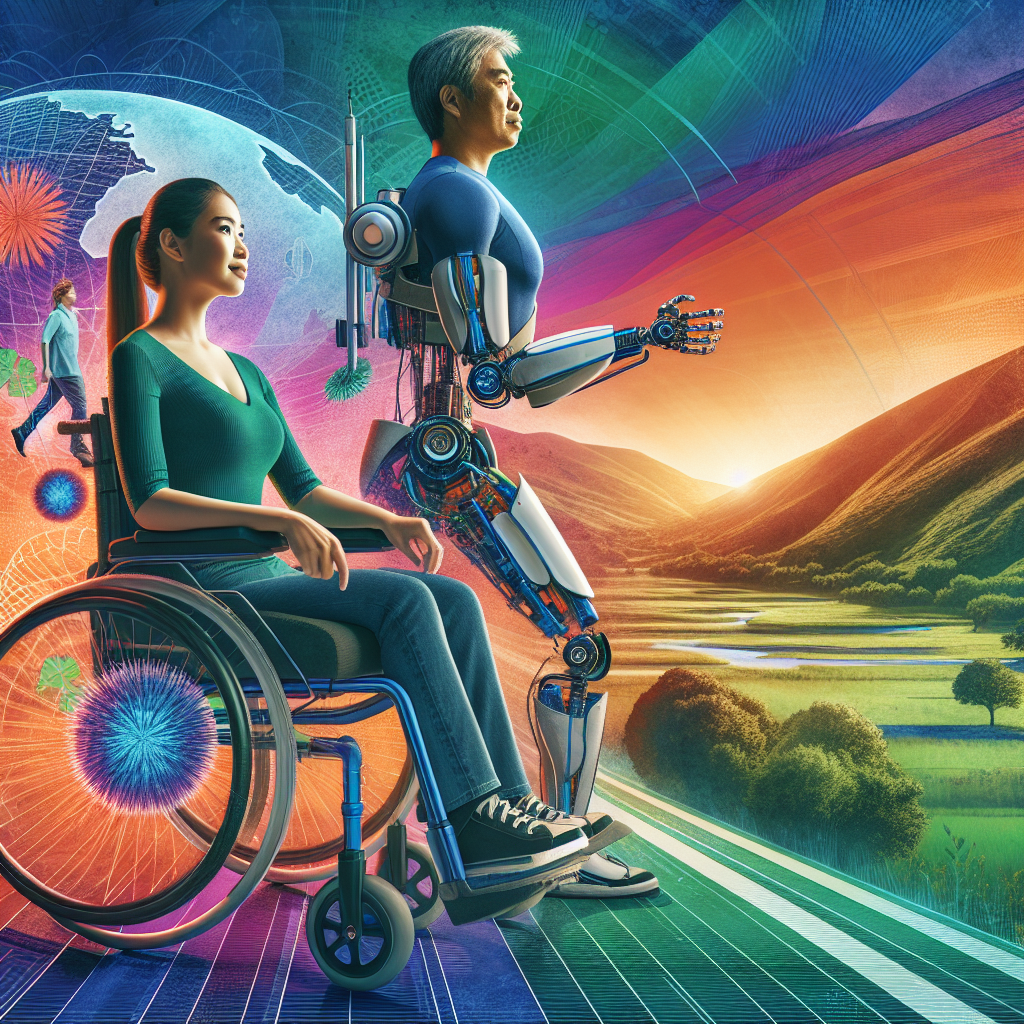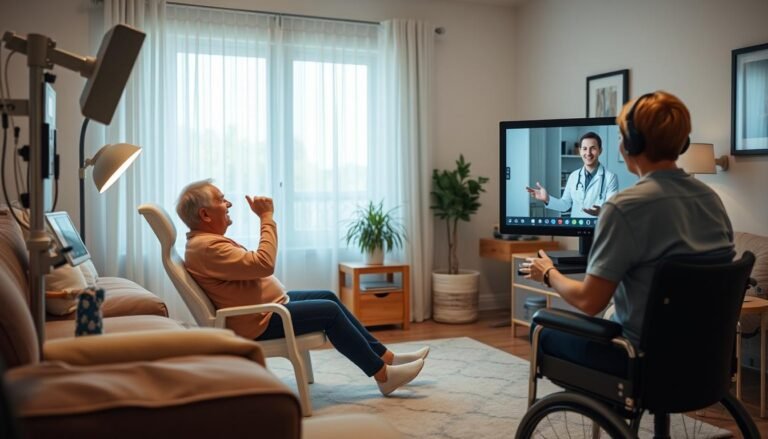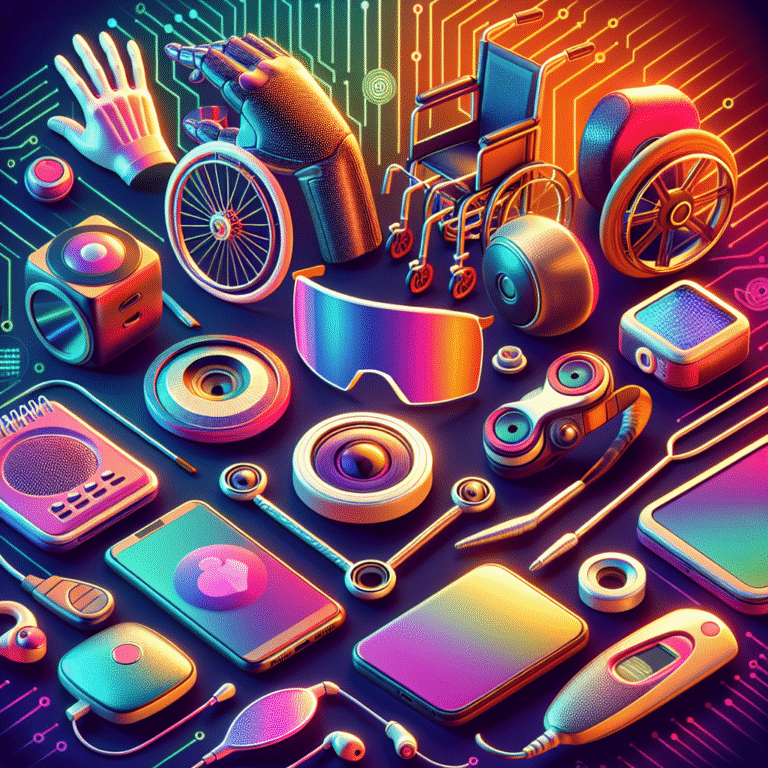
Introduction
Imagine waking up one day and discovering that your ability to move has changed forever. For many, spinal cord injury (SCI) is a moment that transforms not just physical capabilities but life itself. Yet, in this narrative of challenge lies the compelling story of resilience and empowerment. At the forefront of this transformation are assistive technologies, thriving as vital tools that enhance independence, restore dignity, and empower individuals with spinal cord injuries to reclaim their lives.
In our modern world, where innovation knows no bounds, these technologies offer unprecedented support, enabling individuals to transcend their limitations. This article explores Empowering Independence: The Role of Assistive Technologies in Spinal Cord Injury, illustrating how these advancements foster autonomy and enrich quality of life.
Understanding Spinal Cord Injury
What is Spinal Cord Injury?
Spinal cord injury is a complex condition where damage to any part of the spinal cord results in a loss of function, mobility, sensation, or both. The extent of the injury can lead to partial or complete paralysis, profoundly altering an individual’s lifestyle. The impact can be physically debilitating, but the emotional and social implications are equally significant, making it a challenge that no person should face alone.
Types of Spinal Cord Injuries
To delve into how assistive technologies can help, it’s essential to understand the types of spinal cord injuries. They can be classified primarily into two categories:
- Complete Injury: This results in a total loss of sensation and motor function below the injury site.
- Incomplete Injury: This retains some degree of function or sensation, allowing for varying levels of mobility.
With this understanding, we can better appreciate the multitude of assistive technologies designed to empower individuals facing these challenges.
The Landscape of Assistive Technologies
What are Assistive Technologies?
Assistive technologies are devices or systems that support individuals in daily activities, enhancing their independence and enhancing their quality of life. In the context of spinal cord injuries, these technologies can range from simple aids to complex electronic systems designed to assist with mobility, communication, and daily living tasks.
How Assistive Technologies Empower Independence
1. Mobility Solutions
Wheelchairs and Mobility Aids
Traditionally, wheelchairs have been the cornerstone of mobility solutions for individuals with spinal cord injuries. However, advancements in this realm have led to more innovative designs.
Case Study: The Smart Wheelchair
One compelling innovation is the introduction of smart wheelchairs, equipped with sensors and AI technology. These wheelchairs offer navigation assistance, obstacle detection, and even app connectivity for enhanced communication.
- Analysis: Smart wheelchairs reflect a paradigm shift in autonomy for people with SCI. They enable users to navigate their environments with ease and provide tools for social interaction, significantly improving overall quality of life.
2. Communication Technologies
Speech-Generating Devices
For individuals with upper body paralysis, communication can be a significant barrier. Speech-generating devices (SGDs) transform the lives of those unable to use traditional speech as a result of their injury.
Case Study: Eye-Tracking Technology
Eye-tracking technology is a revolutionary advancement that allows individuals to communicate simply by moving their eyes.
- Analysis: This technology exemplifies empowerment; it removes barriers to communication, allowing individuals to express thoughts and desires, facilitating better social integration.
3. Home Automation and Environmental Control
Smart Home Devices
Smart home technologies play a crucial role in enhancing independence for individuals with SCI. Devices like smart lights, thermostats, and automated doors can be controlled remotely or through voice commands.
Case Study: Voice-Controlled Systems
An individual with SCI shares their story of transitioning to a fully automated home, where they can control every aspect of their environment through voice commands.
- Analysis: This transition illustrates the profound difference that home automation makes. By fostering control over one’s living space, individuals enjoy greater independence and a sense of dignity.
4. Advanced Rehabilitation Technologies
Robotic Exoskeletons
Rehabilitation technology, such as robotic exoskeletons, is profound in allowing individuals to regain some degree of mobility, encouraging physical rehabilitation.
Case Study: Real-Life Recovery with Exoskeletons
A recent case demonstrated a man with complete paralysis regaining his ability to stand and walk through the use of a robotic exoskeleton.
- Analysis: Beyond physical mobility, such technologies instill hope and motivation, key elements in the recovery journey. The psychological benefits are just as significant, promoting a can-do spirit.
Data and Effectiveness
Tables and Charts: The Impact of Assistive Technologies
| Technology Type | Percentage of Users Reporting Improved Quality of Life | Commonly Used Devices |
|---|---|---|
| Mobility Aids | 75% | Wheelchairs, Smart Wheelchairs |
| Communication Devices | 85% | Eye-Tracking Systems, SGDs |
| Home Automation | 70% | Voice-Controlled Systems |
| Rehabilitation Exoskeletons | 60% | Robotic Exoskeletons |
Personal Stories of Empowerment
The Journey of Sarah
Sarah, a young woman with a spinal cord injury sustained during a car accident, exemplifies resilience. After her injury, she faced the stark reality of her new limitations. However, the integration of assistive technologies changed her life dramatically.
The Role of Technology
With the help of a smart wheelchair and home automation, Sarah was able to return to her job. Her smart wheelchair allowed her to navigate her office, while home automation aided in daily tasks, giving her a newfound sense of independence.
Stories from the Community
Across the globe, countless individuals share similar narratives of empowerment and triumph, attributing their success to assistive technologies. These personal accounts reinforce the effectiveness and necessity of these tools in overcoming the physical limitations imposed by spinal cord injuries.
Conclusion
The landscape of assistive technologies has radically transformed, proving to be instrumental in Empowering Independence: The Role of Assistive Technologies in Spinal Cord Injury. From mobility aids to communication devices and home automation, these technologies have not only enhanced physical abilities but have restored dignity and independence to countless individuals facing the challenges of spinal cord injuries.
As we reflect on the journey of empowerment, it is essential to recognize that the road doesn’t stop here. Continuous advancements in technology, coupled with community support and advocacy, are vital in ensuring that those with spinal cord injuries can navigate their worlds with confidence and autonomy.
Motivational Takeaway
Every overcoming story teaches us that resilience education and innovation work hand in hand. Let us champion the cause of assistive technologies for spinal cord injury and continue pushing the boundaries of what is possible.
FAQs on Assistive Technologies and Spinal Cord Injury
1. What types of assistive technologies are available for spinal cord injuries?
Assistive technologies range from mobility aids (like wheelchairs) to communication devices (like speech-generating devices) and home automation systems. Each category serves a unique purpose in enhancing independence.
2. How effective are smart wheelchairs?
Smart wheelchairs have dramatically improved mobility for users, offering navigation assistance and increasing independence levels significantly, with users reporting quality of life improvements.
3. Can assistive technologies help in rehabilitation?
Yes, technologies like robotic exoskeletons play a critical role in physical rehabilitation by allowing individuals to regain mobility and facilitating recovery.
4. Are assistive technologies covered by insurance?
Coverage for assistive technologies varies by insurance providers and specific policies. It’s essential to check with your insurance company regarding specific equipment.
5. How can one access assistive technology resources?
Various non-profit organizations, hospitals, and rehabilitation centers provide resources and support for accessing assistive technologies. Online platforms also offer information on funding options and technological advances.
Through awareness, education, and advocacy, we will continue to weave together a tapestry of empowerment for those affected by spinal cord injuries.

















